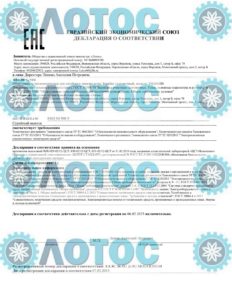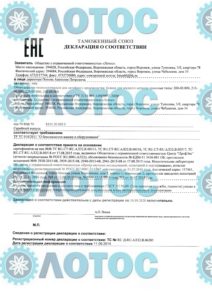Steel-casting buckets are used in shaped-steel and steel-making shops for acceptance of molten metal from the furnace, transportation and casting it. The ladle is a welded vessel lined with refractory material inside and equipped with devices for its transportation and casting of steel.
Hand buckets-are used for carrying and pouring very small amounts of metal. They consist of a fire-resistant conical casing with a flat bottom and a carrying device.
Normals the services provided by the manufacturer of hand scoops six sizes. Buckets with a capacity of 6.10 and 16 kg of metal are equipped with one handle(removable or welded) ,they are served by one person; buckets with a capacity of 25.40.60 kg of metal are equipped with stretchers(rigid or rotary)they are served by two workers.
Monorail tapered buckets-differ from manual sizes and the presence of suspension for transportation. They are made of seven sizes. Small buckets with a capacity of 100,16,250 kg for metal casting are tilted by the worker with the help of a special double handle. The slope of larger buckets-capacity 400,500,630 and 800 kg by rotating the steering wheel through the gearbox.
Crane ladles for pouring on top of produce capacity from 1 to 70 m From the monorail ladles they differ in size and design of the bar, adapted for engagement by a crane hook. Crane buckets with bottom casting are made with a capacity from 1 to 480T.
Small buckets with a capacity of up to 6 tons are Tilted for casting steel manually through the gearbox. Buckets with a capacity of 8-20 tons are equipped with a combined drive-manual from the steering wheel and mechanical from the motor. Larger buckets-from 25-70T-are equipped only with electric drive.
Teapot buckets are characterized either by the presence of a special partition that does not reach about ¼ of the height of the bucket of its bottom, or by a specially made lining. This design prevents the ingress of slag into the mold or mold together with the steel.
Small teapot buckets with a capacity of 100,160 and 250 kg are used to tilt them when pouring a special handle. Larger ladles are made according to individual orders, for their turn it is necessary to provide the reducer with a steering wheel.
Drum buckets perform the cylindrical form closed that allows to protect well metal from cooling. Monorail drum buckets are made of four containers: 400,500,630.and 800kg. Crane five sizes-1 to 5 T. All the drum buckets, regardless of the capacity lean manually. This is due to the fact that their rotation does not require much effort. Since the cylindrical body of the bucket is well balanced.
The side covers of the drum buckets are bolted to the casing, which makes it easier to disassemble the bucket when repairing or replacing the lining.
Lock buckets with lower casting in the bottom of the bucket made a special hole, which, as necessary, opens or overlaps the stopper .Operate a stopper by means of the locking mechanism. Application of buckets of this type in steelmaking shops is caused by the following:
- The lower casting makes it possible to abandon the preliminary download of the slag, so the liquid metal from the moment of filling it into the bucket and until the end of the casting is isolated from the atmosphere, which prevents rapid return by emitting.
- Casting styles through the lock hole also contributes to improving the quality of ingots, as the slag layer in the bucket prevents the oxidation of steel with air oxygen, and dissolved in steel gases and non-metallic inclusions during the entire time of casting are released from the lower layers of metal and float to the surface, preventing them from entering the casting.
- In case of stop casting, despite the presence of slag in the bucket, it is prevented from getting into the poured forms or molds, which is very difficult to achieve with the upper casting through the sock.
- Easily controlled stopper allows you to smoothly adjust the process of casting in a wide range-to change the rate of casting, if necessary, stop casting.
- The absence of necessity in the slope of the bucket filled with metal during casting allows the use of buckets of any capacity ,determined only by the capacity of the steelmaking unit.
- Buckets for vacuum treatment of steel-vacuum treatment of steel in the bucket is carried out in a special chamber. After installing a bucket filled with molten metal, it is covered with a lid and vacuum pumps in it for a short time(12-20min) create a relatively deep vacuum.
When the pressure in the chamber decreases, gases are released from the steel, and when the minimum pressure in the chamber is achieved, boiling occurs and the level of steel and slag in the bucket rises by 300-500 mm.
To prevent transfusion of metal across the edge of the bucket is filled so that from the mirror of the slag to the top of the bucket free height of not less than 500 mm. Thus, the ladle vacuum treatment of steel constitute a retaining buckets with a smaller fill factor of the liquid metal. This is achieved by increasing the height of the bucket in comparison with the size of casting buckets designed to receive the same amount of metal.
The purpose of the lining and the conditions of its operation.
Ladle lining designed to protect the metal bucket from the action of molten metal and hold it in the ladle, the Lining is made of refractory materials with different structures, chemical and mineralogical composition and physical properties. The lining must be resistant to corrosive action of molten slag and steel. The cooling rate of the steel and slag during the stay in the bucket should be such that their liquid fluidity was sufficient for casting with minimal formation of the infusion.
The correct choice of refractory material, masonry scheme and lining drying mode is of great importance, as molten metal and slag have an aggressive effect on the lining. This leads to a reduction of the service life of the lining. Time of repair of the lining (small and capital )are much larger than the operation time of the bucket. For this reason, the bucket utilization rate is still very low.
Under the terms of work, methods of preparation for work and durability bucket lining can be divided into three parts.
Lining of steel teeming stopper and glass work in the most difficult conditions. These elements of the lining, including female brick, in which is inserted a glass stopper form in store. The difficult conditions of the stopper due to the fact that it is washed on all sides by molten metal and throughout the casting is not cooled. In no less severe conditions is identified and a glass, through which the entire mass of the molten metal. In addition, the surface of the stopper and the glass, washed by metal, is very small in comparison with the surface of the rest of the lining, so the specific temperature intensity of the glass and the stopper is very high. At the same time, these elements of lining are the most responsible, as they affect trouble-free and high-quality casting of steel. Therefore, the stopper and the glass, regardless of wear and condition of their surface, must be replaced by others after each casting.
The bucket bottom lining must withstand all ferrostatic pressure of the molten metal. It is longer than any other part of the lining is subjected to high temperatures and experiences the most intense heat, and often mechanical shock when you receive the first portions of the molten metal .Therefore, the thickness of the lining of the bottom must be greater than the thickness of the lining walls.
The lining of the bucket walls is relatively in the most favorable conditions. On the one hand, it is relatively quickly released from the effects of molten metal. On the other – it is all the time a few is cooled through the casing of the bucket.
All products manufactured by LLC “LOTUS” meet all the requirements of The technical Regulations of the Customs Union, which is confirmed by certificates.
 |
 |
